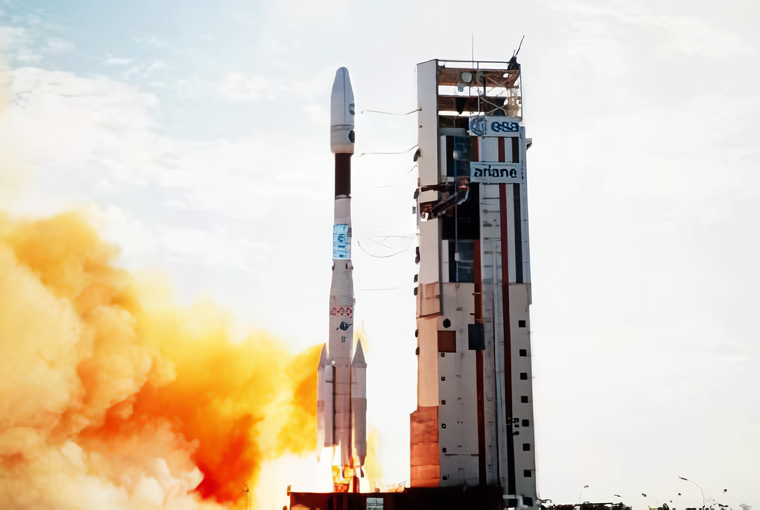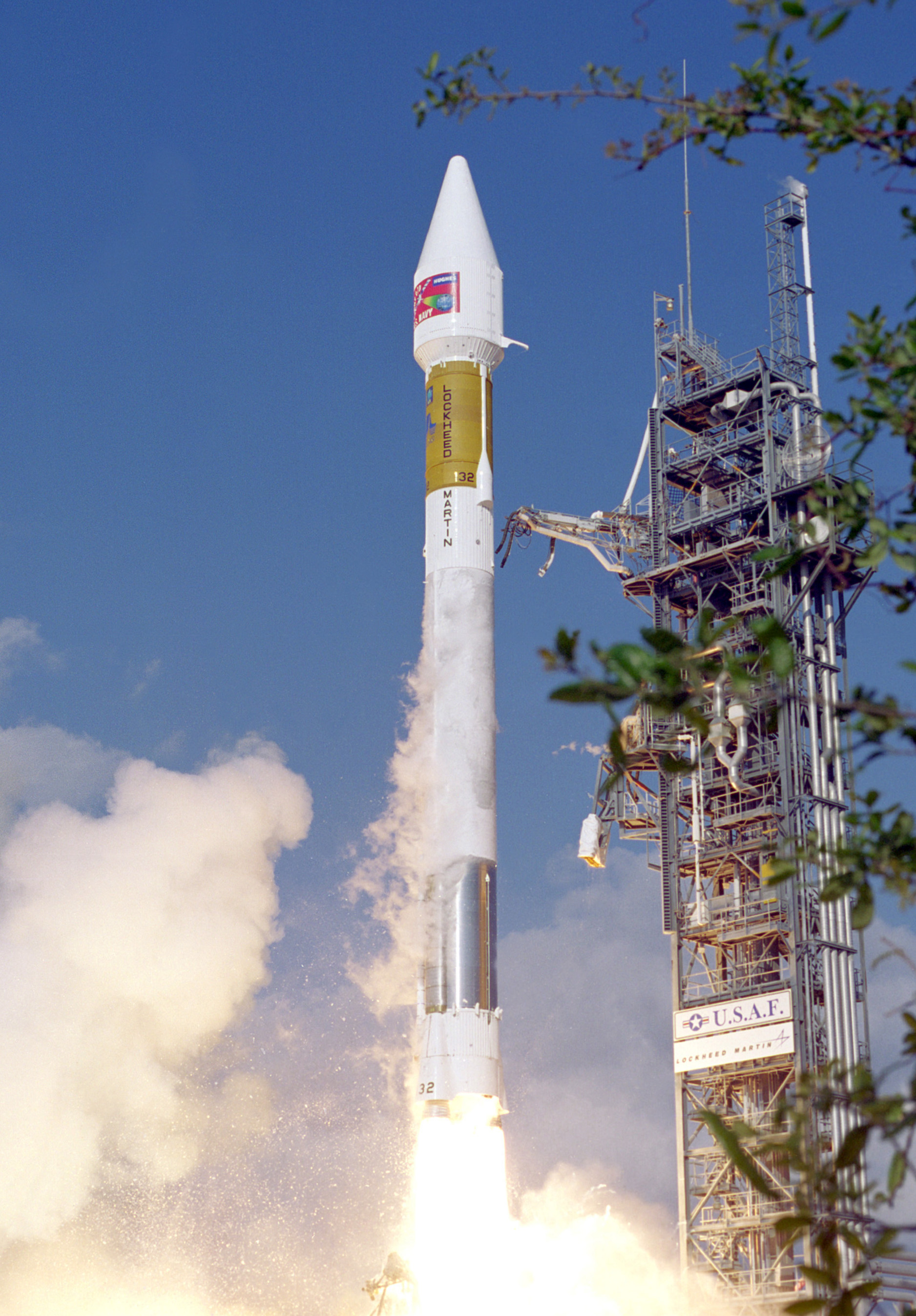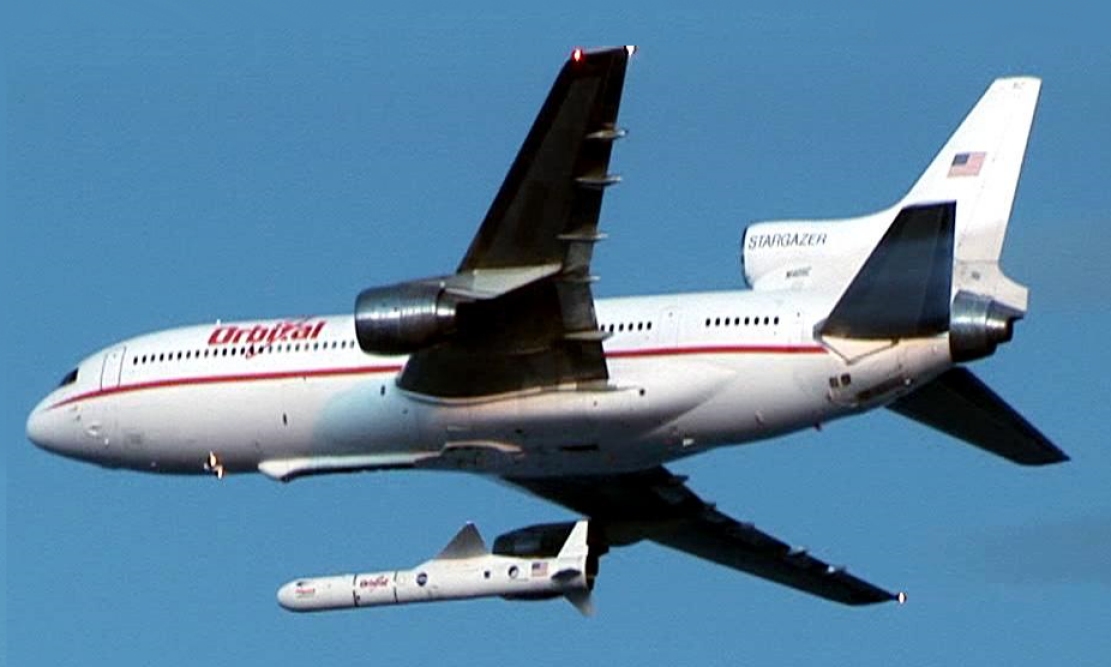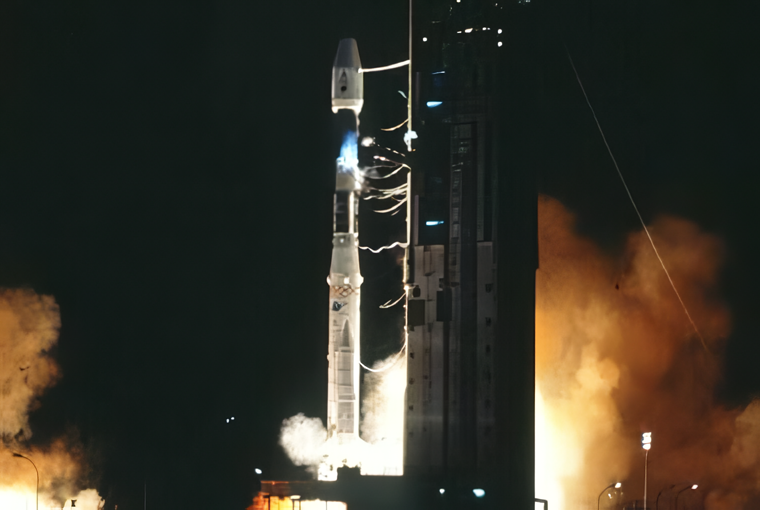Previous Spaceflight Launches
Filter by Agency, Locations or Vehicles
Show All LaunchesAriane 44LP | Europe*Star 1
Aérospatiale | FranceGuiana Space Centre, French Guiana
Oct. 29, 2000, 5:59 a.m.
Proton-K/DM-2M | GE 6
Khrunichev State Research and Production Space Center | RussiaBaikonur Cosmodrome, Republic of Kazakhstan
Oct. 21, 2000, 10 p.m.
Zenit | Thuraya 1
Sea Launch | RussiaSea Launch
Oct. 21, 2000, 5:52 a.m.
Status: Launch Successful
Mission:
Thuraya-1 is the first satellite in the Boeing GEM (Geomobile) series. This product line expands Boeing's offerings beyond satellite manufacturing, to integrate a high-power geosynchronous satellite (derived from the Boeing BSS_702 body-stabilized design) with a ground segment and user handsets, to provide a range of cellular-like voice and data services over a large geographic region. The Thuraya ground segment includes terrestrial gateways plus a collocated network operations center and satellite control facility in the UAE.
Geostationary OrbitAtlas IIA | DSCS-3 B11
Lockheed Martin | United States of AmericaCape Canaveral SFS, FL, USA
Oct. 20, 2000, 12:40 a.m.
Status: Launch Successful
Mission:
DSCS-3 (Defense Satellite Communications System 3) are geostationary communications satellites, which provide a robust anti-jam, nuclear hardened capability that supports Department of Defense (DoD) worldwide requirements, White House and Diplomatic communications. They are the follow-on generation of the DSCS-2 satellites.
Geostationary OrbitSoyuz U | Progress M-43
Russian Federal Space Agency (ROSCOSMOS) | RussiaBaikonur Cosmodrome, Republic of Kazakhstan
Oct. 16, 2000, 9:27 p.m.
Proton | Uragan 75 to 77
Khrunichev State Research and Production Space Center | RussiaBaikonur Cosmodrome, Republic of Kazakhstan
Oct. 13, 2000, 2:12 p.m.
Space Shuttle Discovery / OV-103 | STS-92
National Aeronautics and Space Administration | United States of AmericaKennedy Space Center, FL, USA
Oct. 11, 2000, 11:17 p.m.
Pegasus Hybrid | High Energy Transient Explorer 2 (HETE-2)
Orbital Sciences Corporation | United States of AmericaAir launch to orbit
Oct. 9, 2000, 5:38 a.m.
Ariane 42L | N-SAT-110
Aérospatiale | FranceGuiana Space Centre, French Guiana
Oct. 6, 2000, 11 p.m.
Status: Launch Successful
Mission:
The N-SAT-110 telecommunications satellite, designed and built for Space Communications Corporation (SCC) and JSAT Corporation of Tokyo, Japan by Lockheed Martin Commercial Space Systems (LMCSS), was launched successfully on 06.10.2000 from Kourou, French Guiana.
Geostationary OrbitProton-K/DM-2M | GE-1A
Khrunichev State Research and Production Space Center | RussiaBaikonur Cosmodrome, Republic of Kazakhstan
Oct. 1, 2000, 10 p.m.
Status: Launch Successful
Mission:
The GE-1A telecommunications satellite was designed and built by Lockheed Martin Commercial Space Systems (LMCSS) for Americom Asia-Pacific (AAP), a joint venture between GE American Communications and Lockheed Martin Global Telecommunications.
Geostationary Orbit








